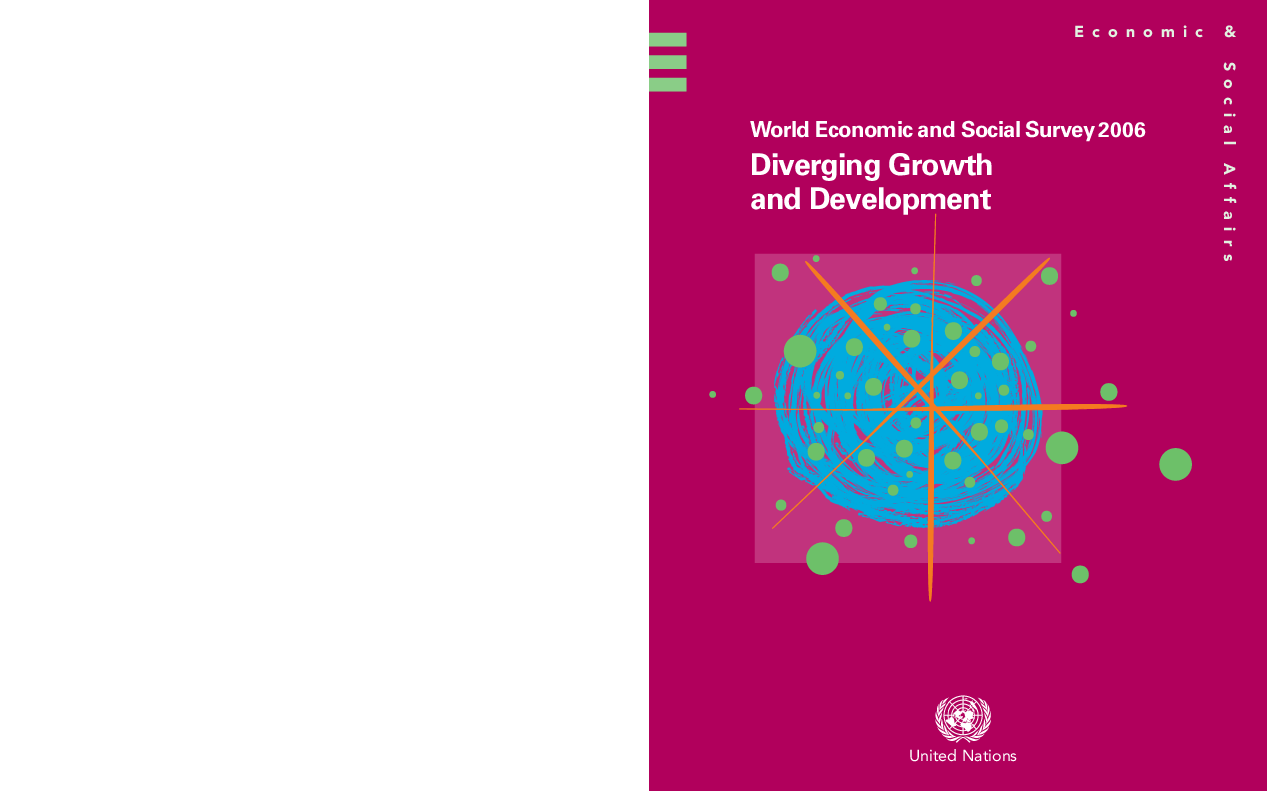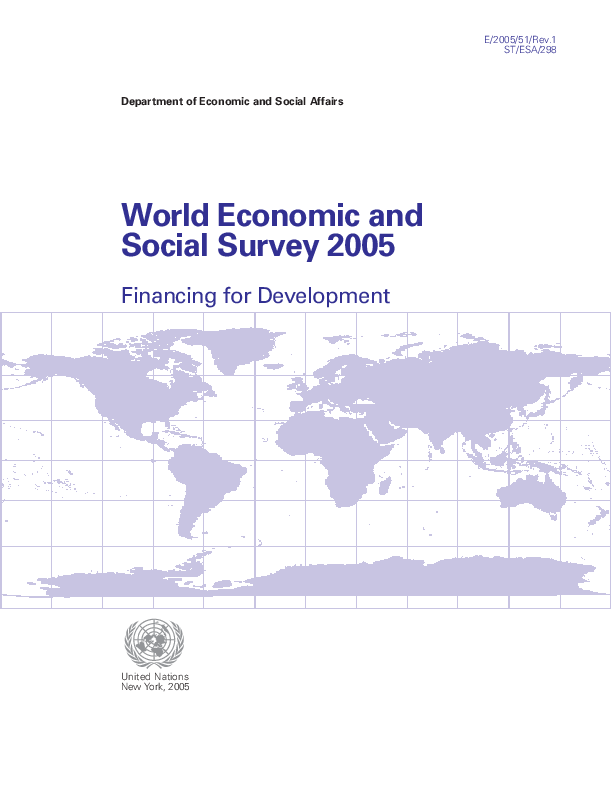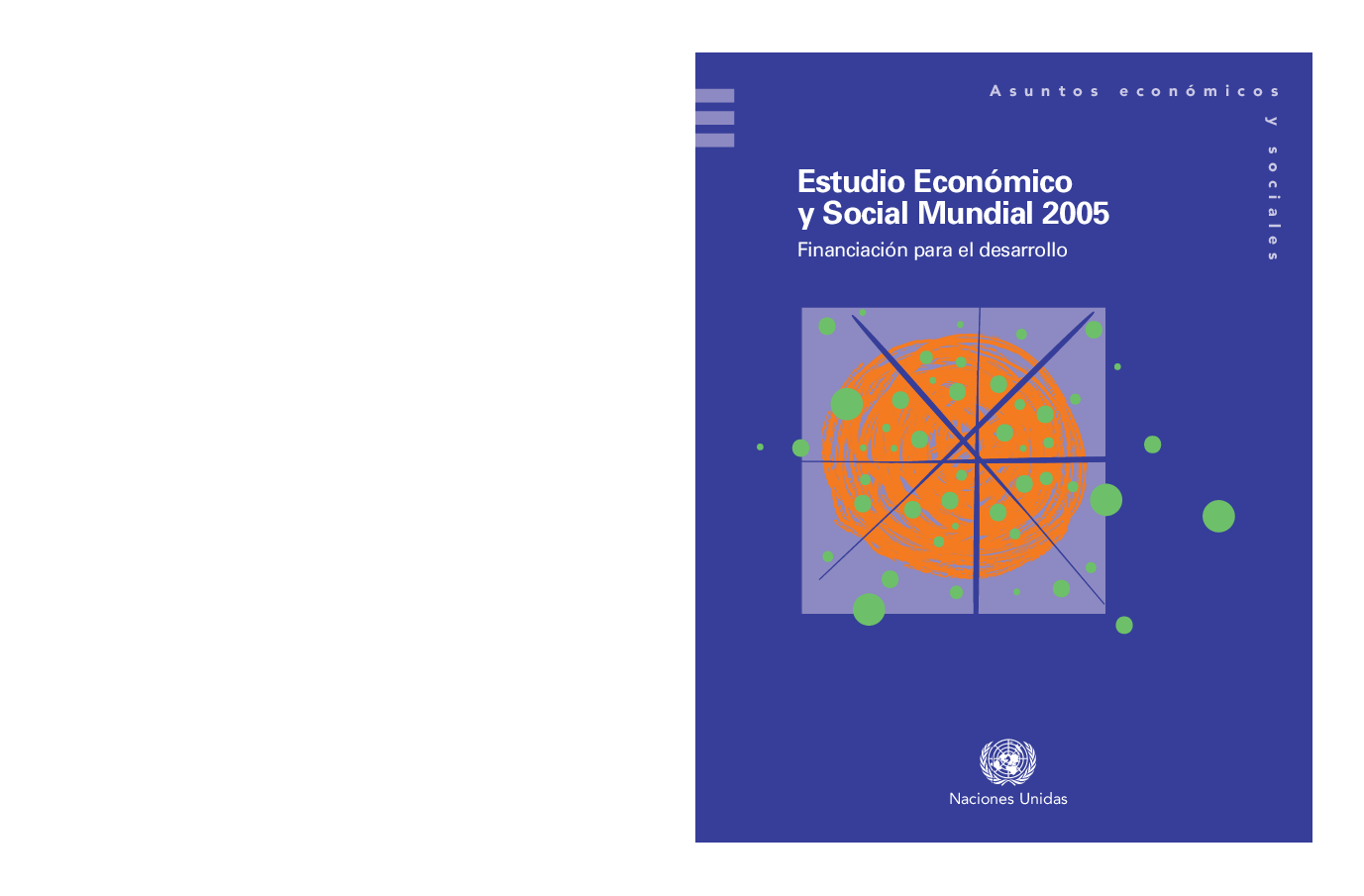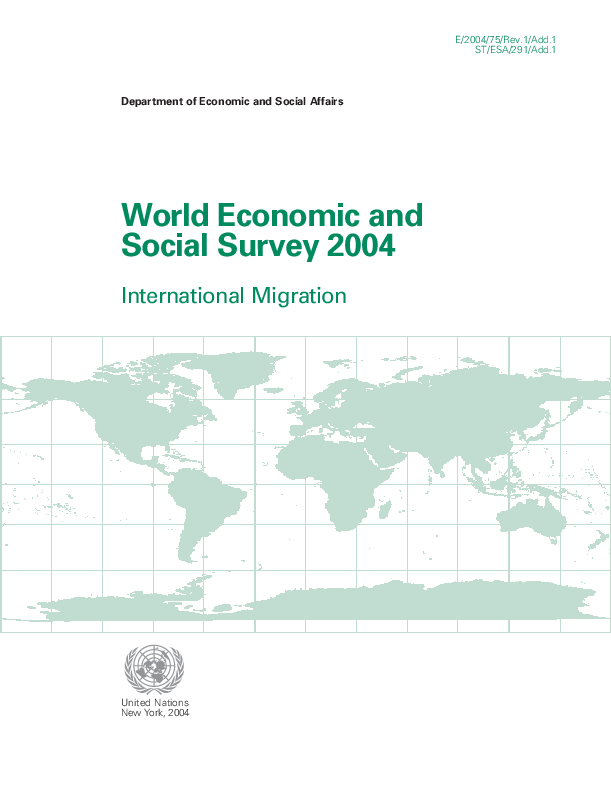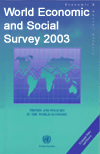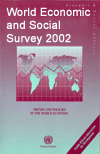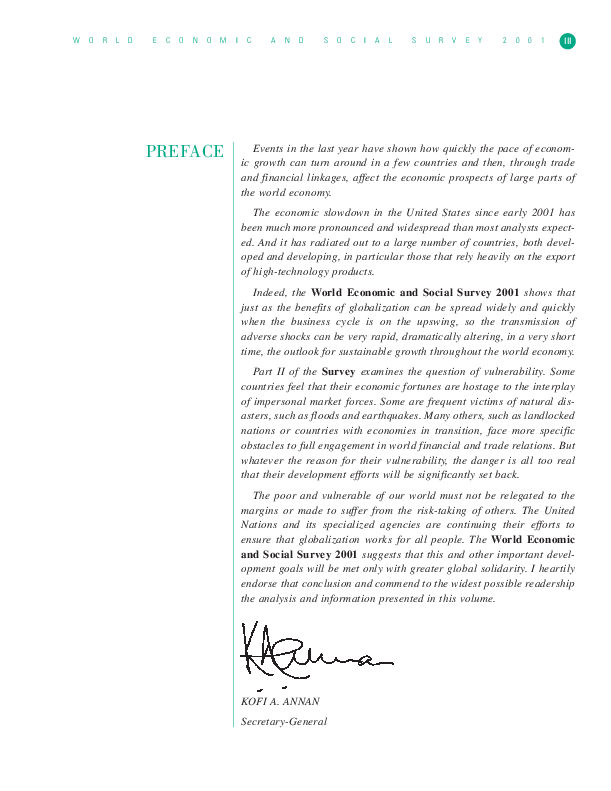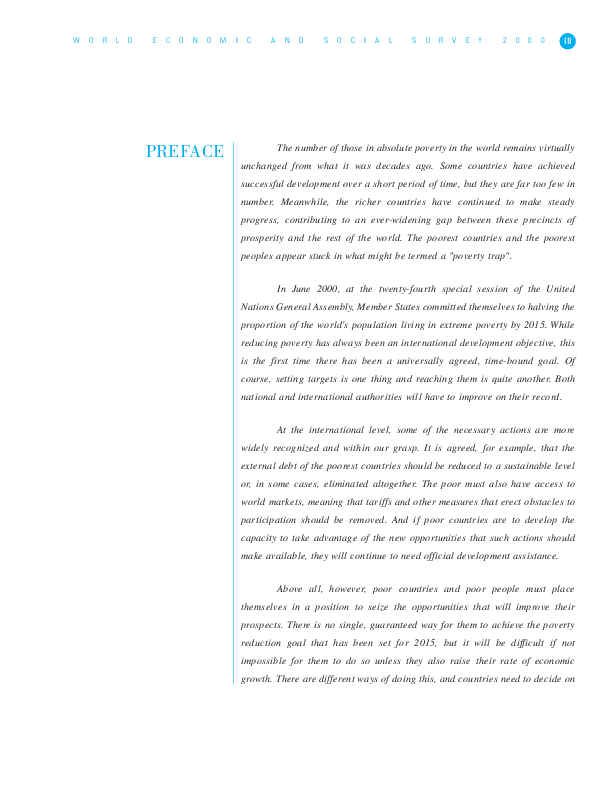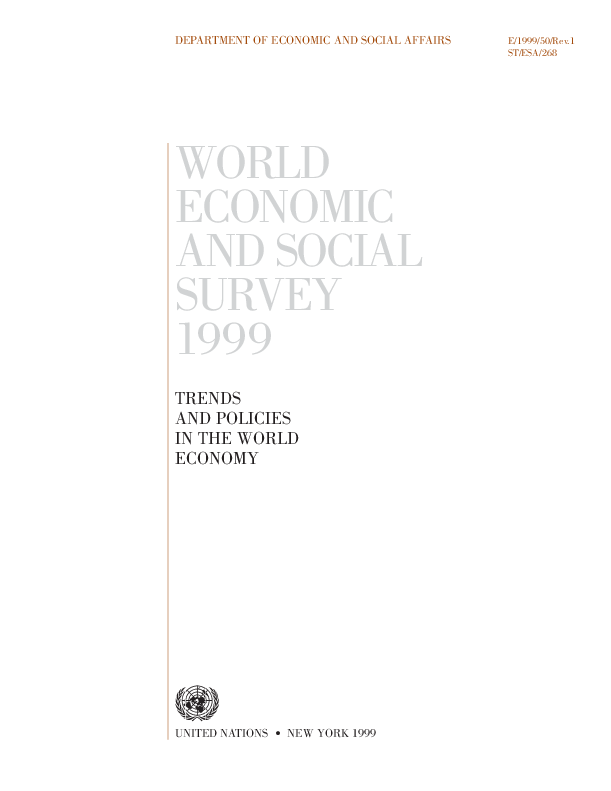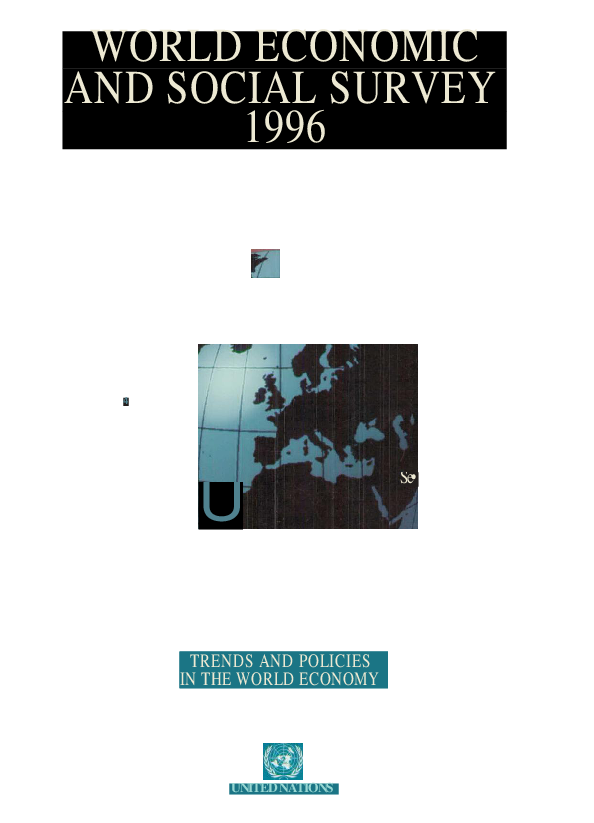Publications
Displaying 51 - 60 of 122
ISBN 92-1-109149-7 Download Full report: English Français Español Buy copy from UN Publications World Economic and Social Survey 2005
ISBN 92-1-109149-7 Download Full report: English Français Español Buy copy from UN Publications World Economic and Social Survey 2005 Fench
ISBN 92-1-109145-4
Download Full report in English Part II. International Migration The second part of the World Economic and Social Survey 2004 addresses international migration. It examines historical and recent surges in migration, policies towards migration, its economic and social effects, the question… World Economic and Social Survey 2004
Part one: State of the World Economy Part one of World Economic and Social Survey 1999 provides a chronicle of how large parts of the world economy were sent reeling in the past two years by the fragility of financial systems and their international connectedness. On the whole, the world economy seems to have hit bottom and most of the affected countries are moving towards recovery. Part two: Financial Development in the Globalizing World Part two of World Economic and Social Survey 1999 serves as a contribution to the international discussion on "financing for development". It seeks to give a… World Economic and Social Survey Archive: 1990-1999
 Welcome to the United Nations
Welcome to the United Nations
